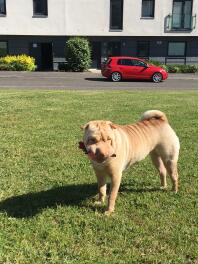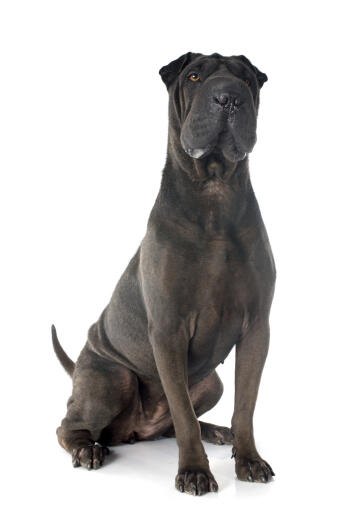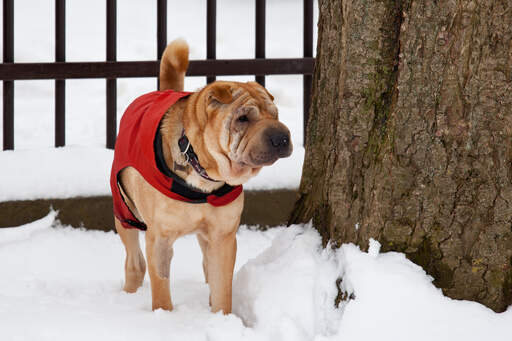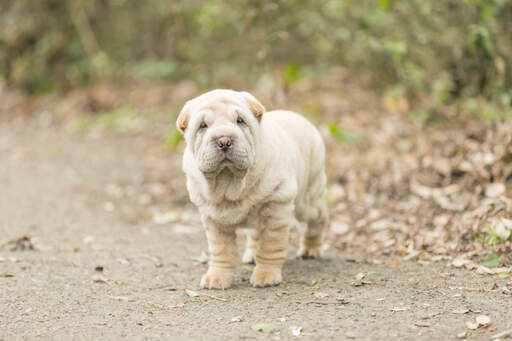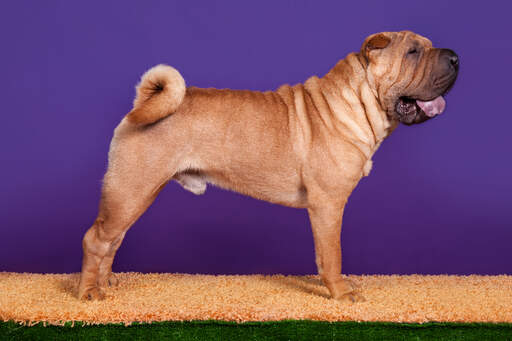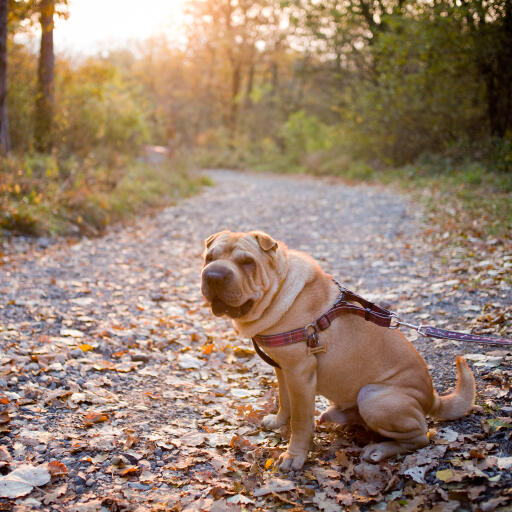Shar Pei Dogs










History
The Shar Pei comes from the Guangdong region of China, though their exact timeline remains unknown. It is thought that they date back to around 200BC and that they are possibly descended from the Chow Chow - though the only thing to back this up is the blue/black colored tongue which both breeds have. They were originally kept as a farm dog for herding, as a watchdog and as a general companion.
Behaviour
The Shar Pei is a confident, calm and devoted breed. Early socialization is absolutely crucial and should start when the dog is around 8 weeks of age. They are usually fine with other pets, though can be aggressive towards other dogs at times. Shar Peis bong very quickly with those around them and seem to crave human attention at all times, hence why they make for such a good companion. They get on well with children, but do have their limits and will not tolerate any play that hurts them such as tail pulling. They house train very quickly, usually getting the hang of it at around 8 to 10 weeks old.
As can be the case with many older breeds, the Shar Pei can be stubborn at times. They do, however, respond well to fair and compassionate training. They can rebel if shouted at. Letting them meet new dogs is a must to prevent dog aggression, this socialisation should carry on throughout their lives. They were often used as palace guards in the past and as a result they make for good watchdogs, but are very wary of strangers. They only back when something is wrong.
Shar Peis absolutely need to be socialized properly, meeting as many new people from a young age to prevent aggression. They need to be taught that they can’t be aggressive towards people and that strangers coming into the house with the wonders permission is OK. Within the family they will be devoted and protective. They always want to be around those close to them and don’t cope well being left alone for long periods of time. Shar Pei’s need a fair amount of exercise, but can be prone to overheating in the summer. Their coat only requires occasional brushing.
Temperament
Chinese Shar Peis are stubborn and protective by nature. Consistency is important when training them as puppies in order for them to learn and maintain respect for their owners. Once trained, they will become devoted to their family and can become terriitorial and aggressive towards strangers and other dogs. This makes early socialization vital, as once past puppyhood it may be too late to train them.
Shar Peis have a strong prey drive and a dominant instinct, so they don't always get on with other dogs and will certainly chase cats, with poor recall skills, unless they been given early training/exposure.
Health Problems
In terms of health, the Shar Pei has one significant weakness, their skin. The skin is loose and because of this is much more prone to infection, particularly under the creases, so be sure to wash the folds of their skin at least once a week. The dogs do eventually “grow into their skin”, though some folds will always be present.
Entropion and Familial Shar Pei Fever can sometimes be seen in this breed, but both are treatable. Other problems that may affect canine hip dysplasia (CHD), ear problems, allergies and patellar luxation (dislocation of the knee cap).
Breed Details
- Status: Common
- Life Expectancy: 9 - 10 years
- Weight: 55 - 64 Ibs
- Height: 18 - 22"
- Rare: No
- Coat: Short
- Grooming Requirements: Once a week
- Town or Country: Either
- Minimum Home Size: Small House
- Minimum Garden Size: Small to Medium Garden
- Breed Type: Companion Dog
- Size: Medium
- Energy Level: Medium
- Exercise Required: Up to 1 hour
Shar Pei Pictures

